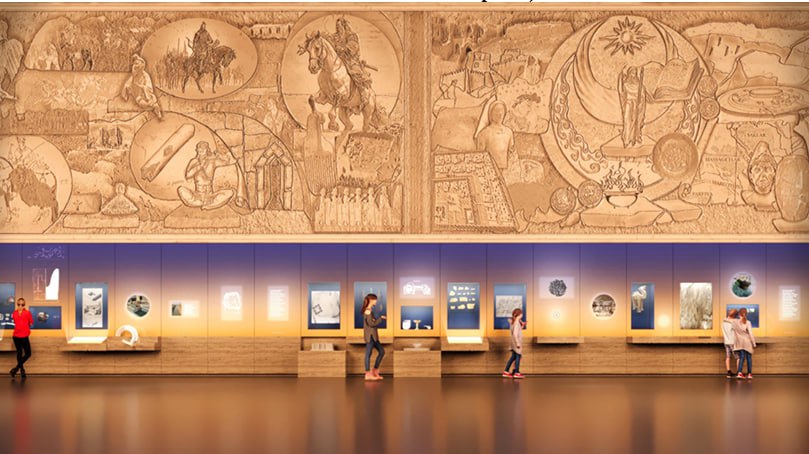Intellectual passport: what is it and why is it needed?
🔴 An exhibition measuring 52 meters in length and 8 meters in height
🔴 About the “Scotland collection”, maps, coins, and more...

From the very first days of its establishment, the Center of Islamic Civilization in Uzbekistan has been systematically working on shaping the content and meaning of the museum exhibition, enriching each section both scientifically and conceptually. The Center’s exhibition covers various periods of civilization and includes nearly 800 projects, which are planned to be implemented step by step. At present, the main projects within the first stage are nearing completion.
All content exhibits, visual and informational materials are being prepared in cooperation with international organizations, prominent scholars, and museologists, and are being formed in accordance with the unified design concept of the museum exhibition. Based on this, a special “exhibition passport” has been designated for each section.
The exhibition passport compiles detailed information about each section’s theme, historical periods, list of exhibits, design executors, content authors, and visual solutions. This document, kept in both electronic and paper formats, will serve as a guide for ensuring that the exhibits included in the exhibitions always have an exact place and documented information in the future.
In this regard, at the latest working meeting led by the Director of the Center of Islamic Civilization, Firdavs Abdukhalikov, a sample passport developed for the section “Pre-Islamic civilizations” within the “Wall of civilizations and discoveries” exhibition was presented.
According to the Center’s chief researcher, Zohidilla Munavvarov, this passport includes essential parts such as content executors, visual composition, conceptual framework, and list of exhibits, thereby serving to establish a unified standard for every exhibition.
As a specialist who worked on the prepared sample passport, researcher Obidjon Tangirov proposed creating a separate list that considers the likelihood of the number of exhibits increasing in the future.
During the meeting, the scientific foundations, concept, chronology, and museological solutions included in the sample passport of the “Pre-Islamic civilizations” exhibition within the “Wall of civilizations and discoveries” were thoroughly discussed. Emphasis was placed on the importance of fully covering ancient urban culture, trade routes, writing systems, religious beliefs, and craft traditions.
This exhibition will be showcased in the museum’s main composition the “Wall of civilizations and discoveries”, measuring 52 meters in length and 8 meters in height. It reflects the stages of human development prior to Islam, including religious beliefs and scientific achievements.
The section encompasses 429 projects, including 46 from the Scotland collection, 60 multimedia elements, 17 maps, and 139 coins. In the upper part of the wall, in bas-relief style, the civilizations of Ancient Bactria, Sogdiana, Khorezm, Fergana, and Chach, along with cultural connections and global trade routes, will be compositionally represented.

At the meeting, practical proposals were made on methods of presentation in an interactive museum format and on preparing exhibition scenarios based on archaeological objects. For example, it was suggested to create modern multimedia narratives based on the Bactrian gold, Sogdian documents, Afrasiab murals, and the monuments of Dalvarzintepa and Kampirtepa.
The structure of the exhibition consists of sections such as composition, exhibition, reflection zone, and silence zone. In the next stage, teams of historians, archaeologists, designers, and digital technologists will be formed to ensure that each part of the exhibition is developed with depth and scholarly precision.
Established on the initiative of the President of Uzbekistan, the Center of Islamic Civilization aims not only to preserve historical heritage but also to analyze it scientifically and present it to the international community with due recognition. This meeting was noted as yet another logical and effective step in that direction.
It is worth emphasizing that exhibitions created on the basis of historical facts and objects will undoubtedly enhance the Center’s significance in the fields of museology, historical thought, and intercultural dialogue.
Most read

Over 100 experts from more than 20 countries of the world are in Tashkent!

President of Serbia Aleksandar Vučić visited the Islamic Civilization Center in Uzbekistan

The Center for Islamic Civilization – a global platform leading towards enlightenment











